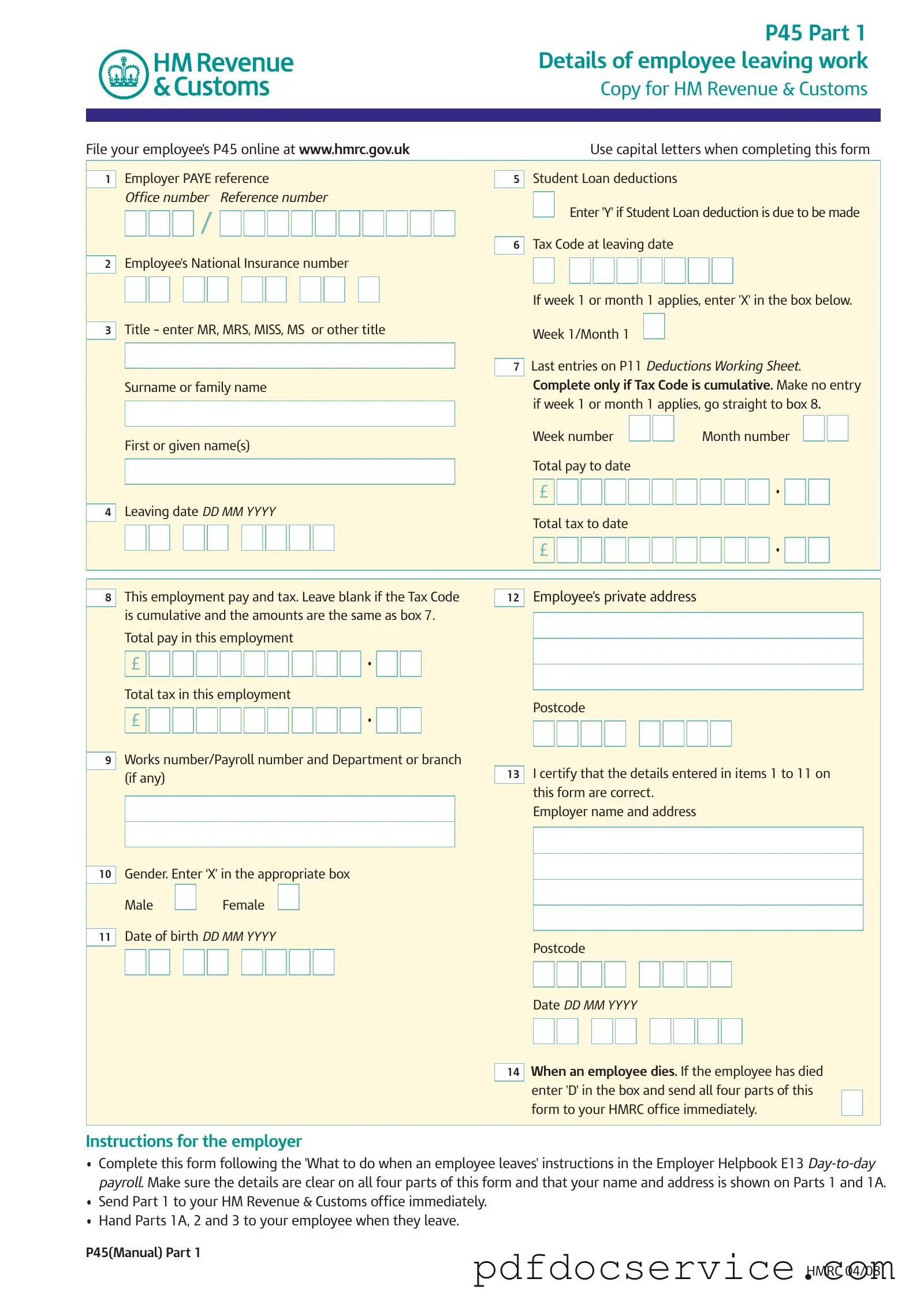The P45 form is a crucial document for both employers and employees in the UK, particularly when an individual leaves a job. This form is divided into three parts, each serving a specific purpose. Part 1 is for HM Revenue & Customs (HMRC) and must be sent immediately by the employer upon the employee's departure. It includes essential details such as the employee's National Insurance number, leaving date, and total pay and tax deductions during their employment. Part 1A is a copy for the employee, who should keep it safe for future reference, especially when filling out a tax return. Part 2 is intended for the new employer, ensuring a smooth transition by providing necessary information about the employee's previous earnings and tax code. Employers must also pay attention to student loan deductions and ensure that all details are accurately completed to avoid any tax complications. The form includes specific instructions for handling cases where an employee has died, as well as guidance for employees who may be transitioning to new jobs or claiming benefits. Understanding the P45 form is essential for maintaining compliance with tax regulations and ensuring that employees are not overtaxed during their employment transitions.
